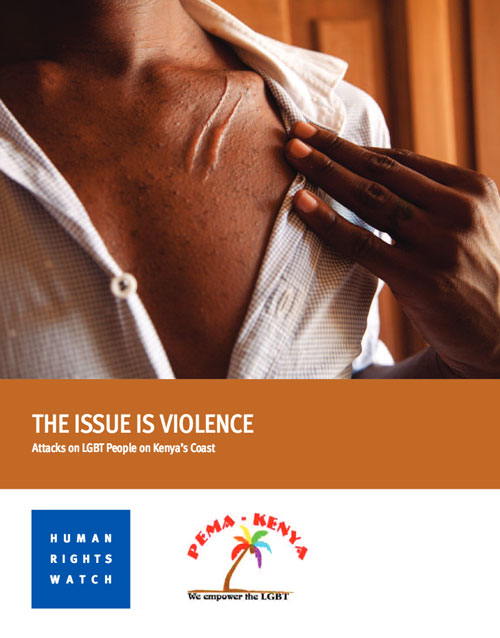‘Nightmare’ for gay refugees in Kenya
Colin Stewart is a 45-year journalism veteran living in Southern…

“They walked into the same nightmare.”
That’s how New York-based photographer Jake Naughton described what embattled gay East African refugees found when they fled to Kenya from their homophobic homelands in hopes of safety.
Naughton has been working with Kenya-based journalist Jacob Kushner to document those refugees’ new lives. An article on that project, including 14 of his photos, was published recently in the Africa edition of Time magazine. These are excerpts from that article:
Fugitives in Their Own Lands: Meet Kenya’s LGBT Refugees

“It can take years, sometimes decades, to be granted asylum to leave Africa,” Naughton tells TIME. “They flee to Kenya, expecting some sense of safety, or at least the ability to securely wait out their processing time when in fact, they walked into the same nightmare.”
Gay equality has a long way to go in Africa. … While Kenya is known to be more liberal to gays and lesbians, homophobia remains rampant throughout the country, amid a rising Evangelical movement. In 2011, President Barack Obama called for expedited resettlement of LGBT refugees, but as Congress allocated little funding for the new legislation, agencies, churches, charities and NGOs that wish to help lack the resources to do so.
Naughton’s pictures depict the living conditions in Kakuma. While the UNHCR covers lodging and offers healthcare access to refugees, living conditions are destitute. “It’s extremely hot, very dusty, with 182,000 people packed into the camp,” Naughton says. “It’s huge, it’s sprawling and it was never designed to hold that many people.”
The photos, taken with a strobe flash, cast an intense light on each refugee. “The light is so bright and so direct, it mimics the intense scrutiny that all these people are under,” he says. “But then by its nature, it casts these deep shadows, which is kind of where the refugees find themselves confined to.”
The refugees’ scars are physical reminders that a new life abroad is worth waiting for: One man poses, a smile thrown off-kilter by a jagged scar from a seven-man machete attack in his apartment after seen with his boyfriend; a woman holds her arm out, showing a deep scar from shoulder to elbow, the fallout of an attack after giving an interview a few years ago on BBC radio.
“As a gay person who came of age after the worst of the experience of the LGBT community here in the U.S., I always felt disconnected from the stories that my mom told me about what my gay uncle experienced,” Naughton says. “But in Kenya, I witnessed that. [It was] amazing to see the way the community came together and supported each other in the face of horrifying violence and hardship and abuse.”
The images are the first part of what Naughton and Kushner envision as a three-part project that follows refugees from beginning to end: from Uganda, where they came from; to Kenya, where they fled to; to the U.S., where two have resettled. “It is our hope to create a record of the experience of the LGBTs that is underreported and unsung,” Naughton says.
For more information and the related photos, see the full Time article, “Fugitives in Their Own Lands: Meet Kenya’s LGBT Refugees.”
Related articles:
- Art Attack: Why we shot ‘Same Love’ video in Kenya (March 2016, 76crimes.com)
- After Kenyan anti-gay sermons, anti-gay rape and arson (Dec. 11, 2015, 76crimes.com)
- 3 ousted priests sue Church of Kenya over gay charges (Dec. 8, 2015, 76crimes.com)
- An appeal to end attacks on LGBT people on Kenya’s coast (October 2015, 76crimes.com)
- Anglican Church suspends five clerics over homosexuality (Sept. 10, 2015, Standard Media)
- Kenyan ‘gay’ priest facing expulsion from church (Sept. 6, 2015, Nairobi News)
- ACK suspends four gay ‘married with kids’ priests (Sept. 10, 2015, Nairobi News)
- Obama in Kenya: ‘Treat people equally under the law’ (July 25, 2015, 76crimes.com)
- Kenya buzzing with anti-gay worries as it awaits Obama’s visit (July 21, 2015, 76crimes.com)
- U.S.-based church votes to support LGBTI Africans (July 3, 2015, 76crimes.com)
- Kenya: Homosexuality Serious As Terrorism – Duale (March 2014, Capital FM)
- Kenya: Bungoma Cleric Slams Gay Unions (March 2014, The Star)



International jurists to India: Overturn anti-gay law